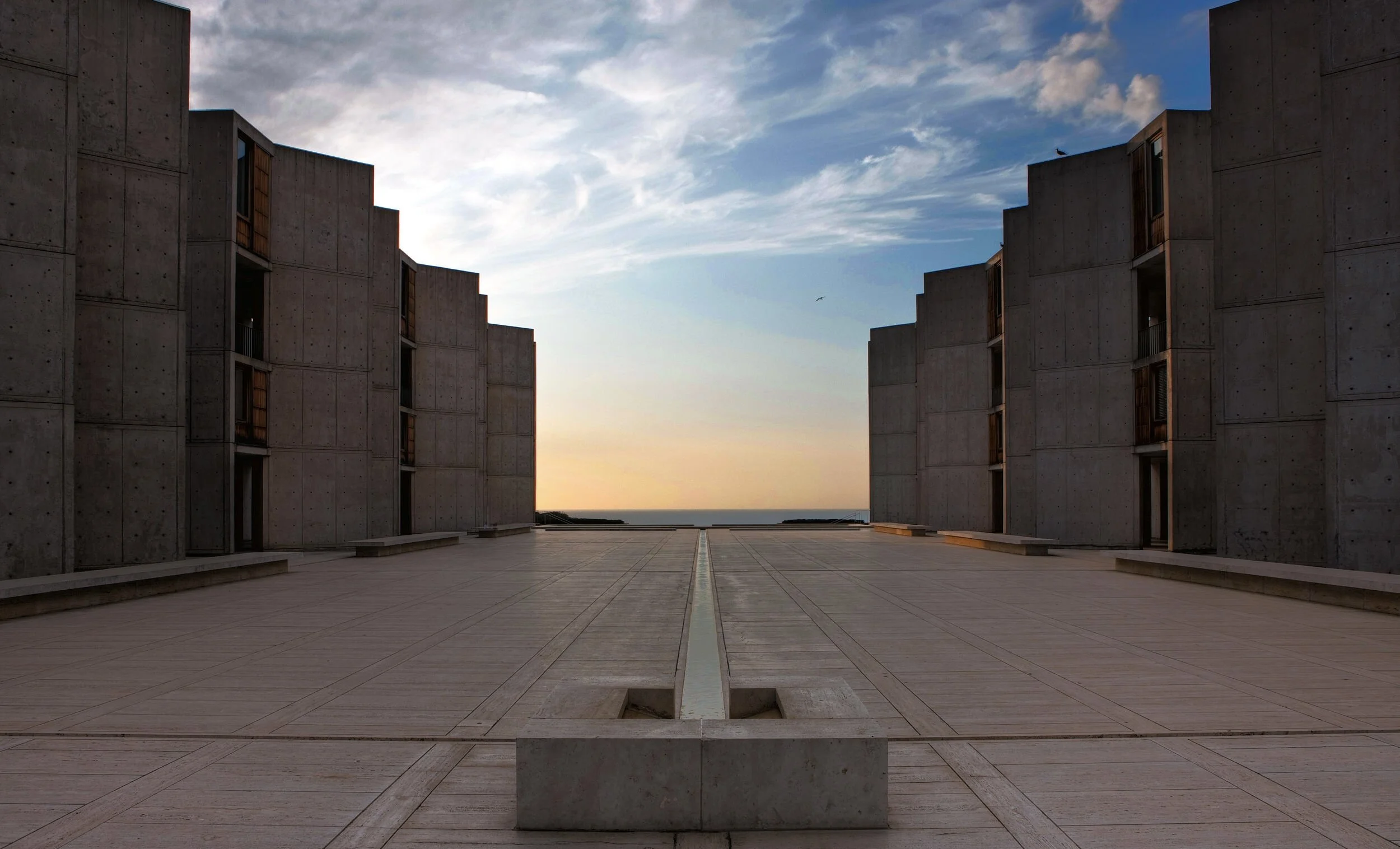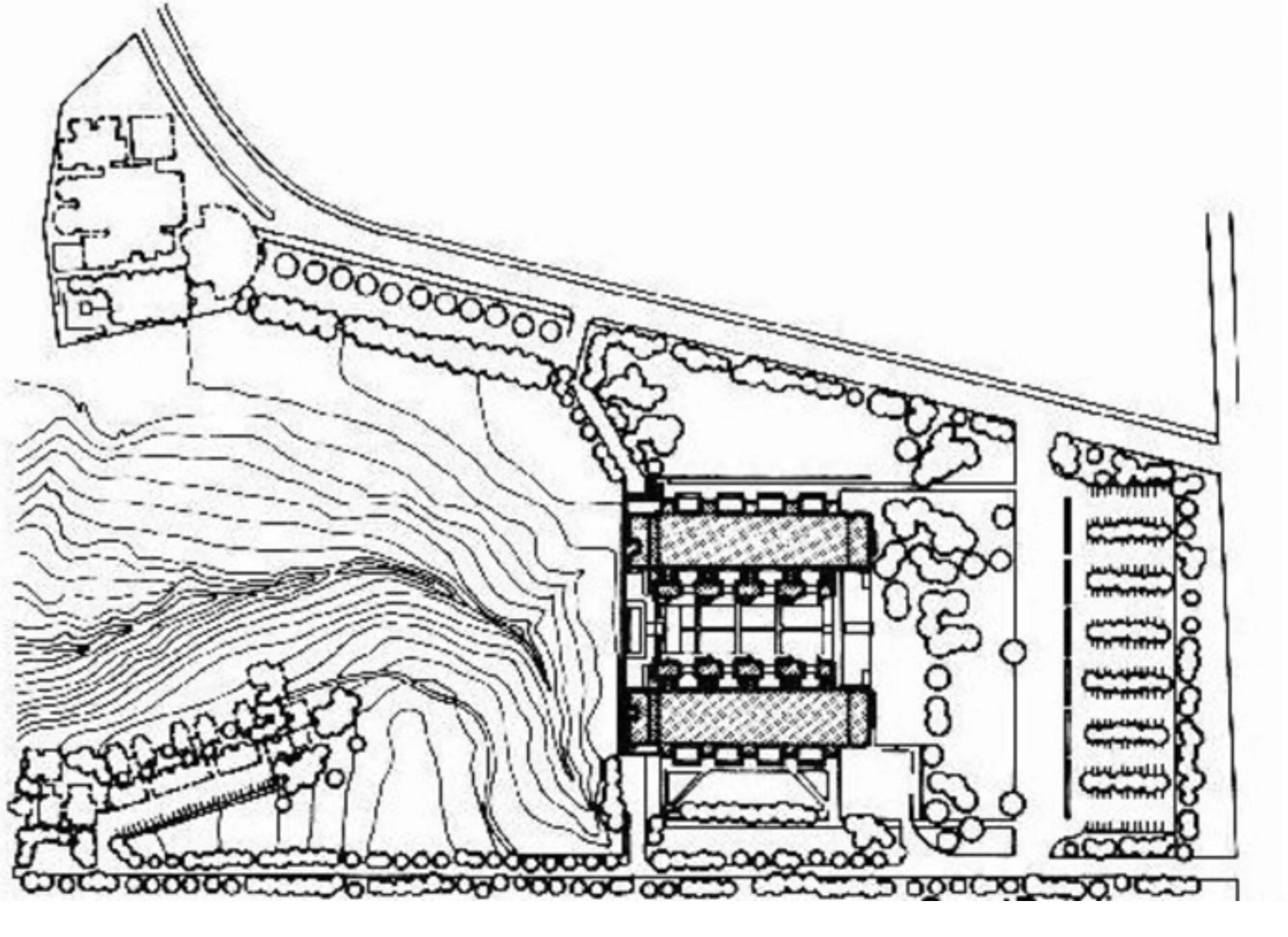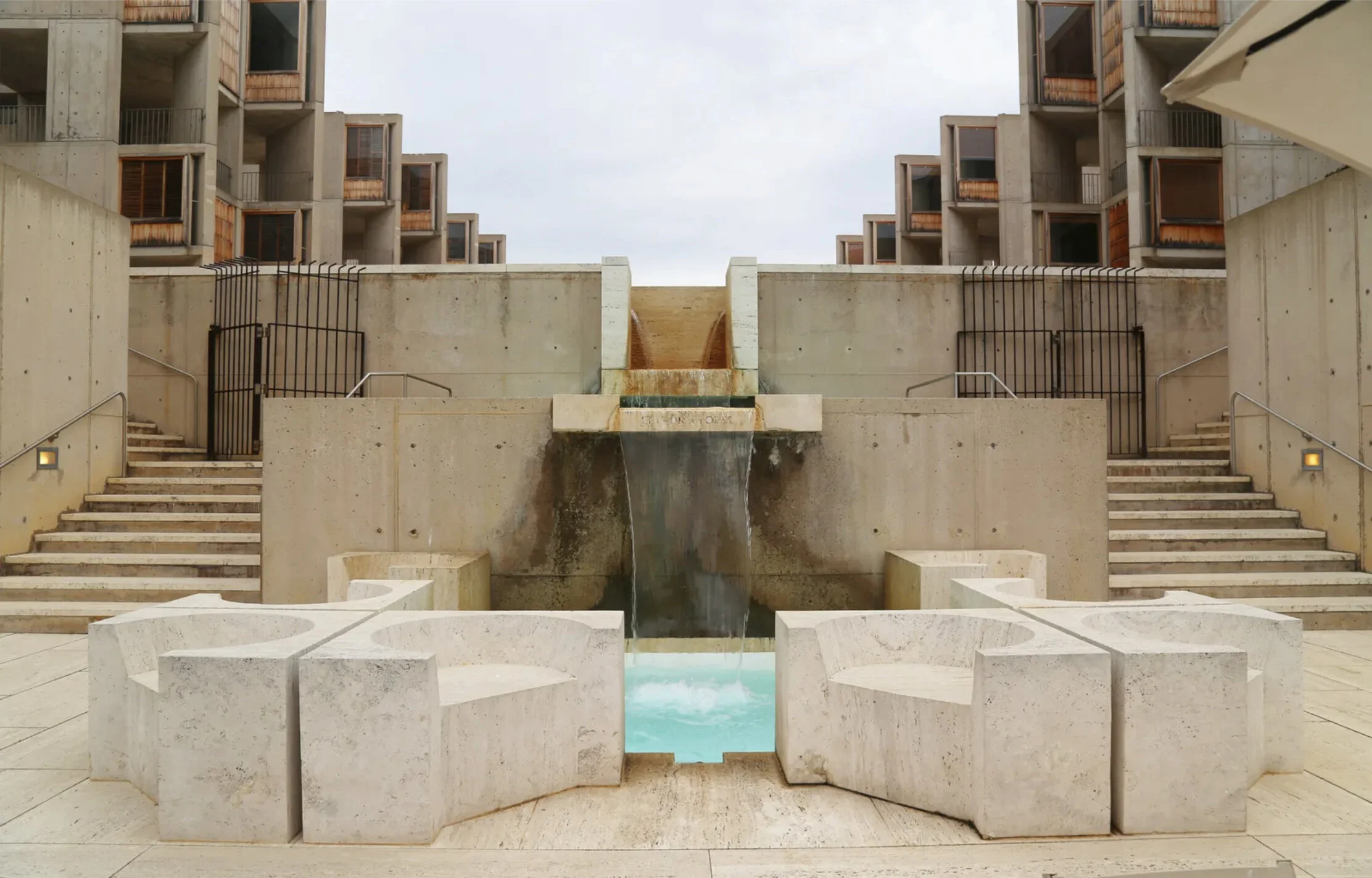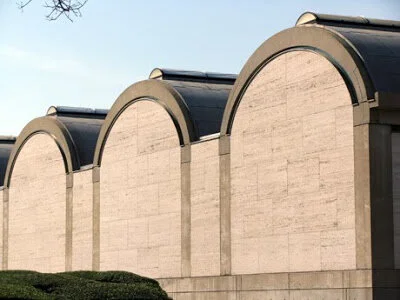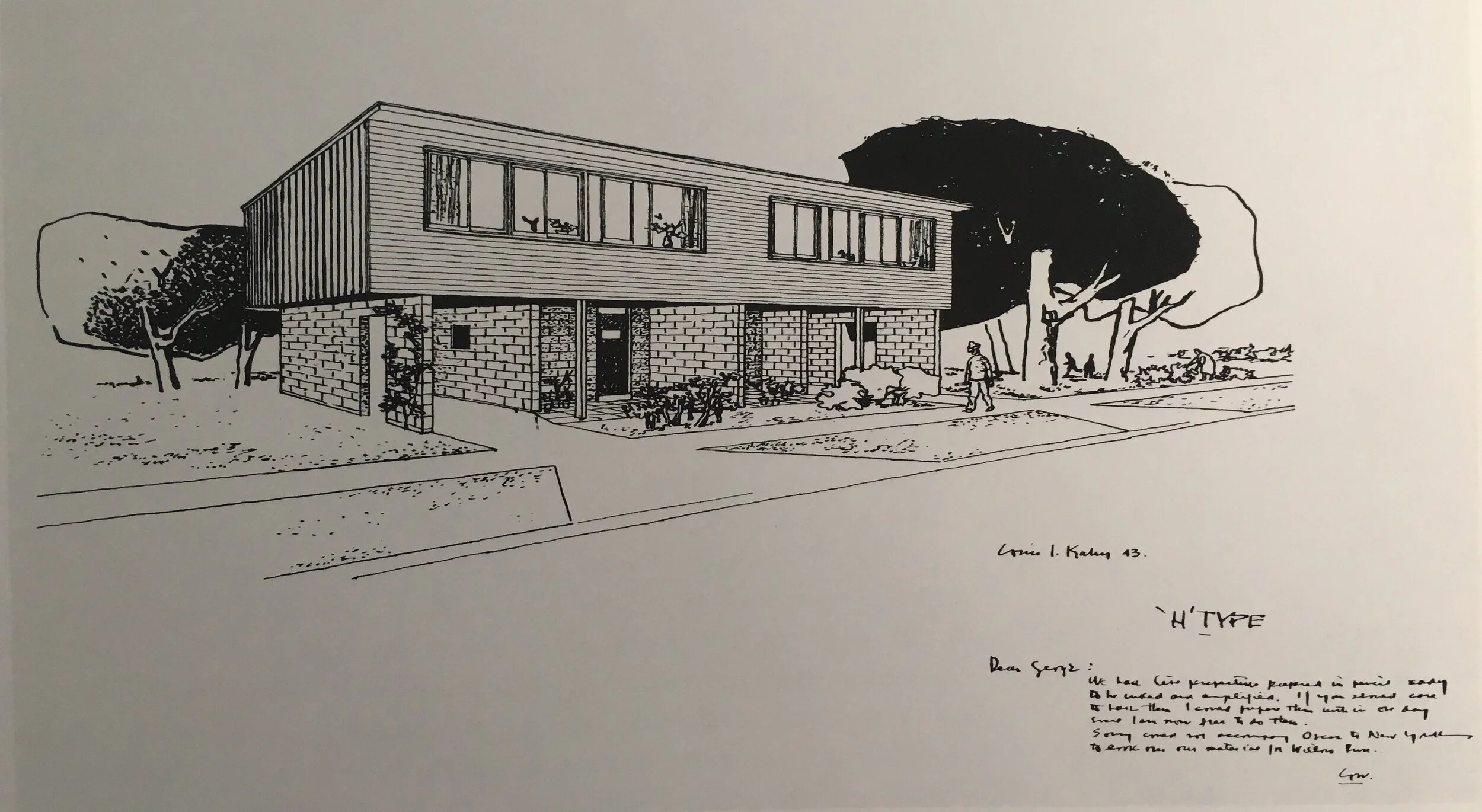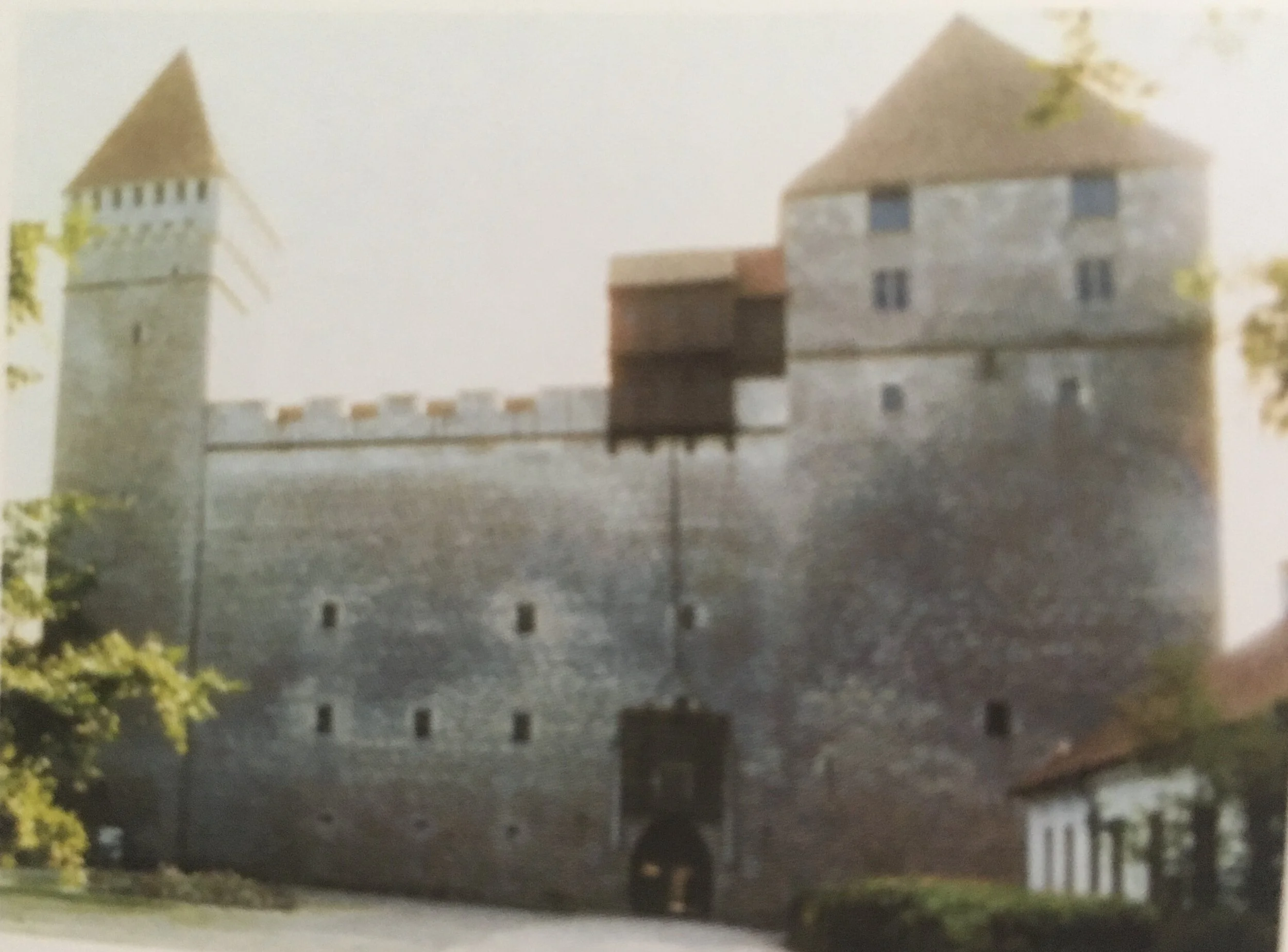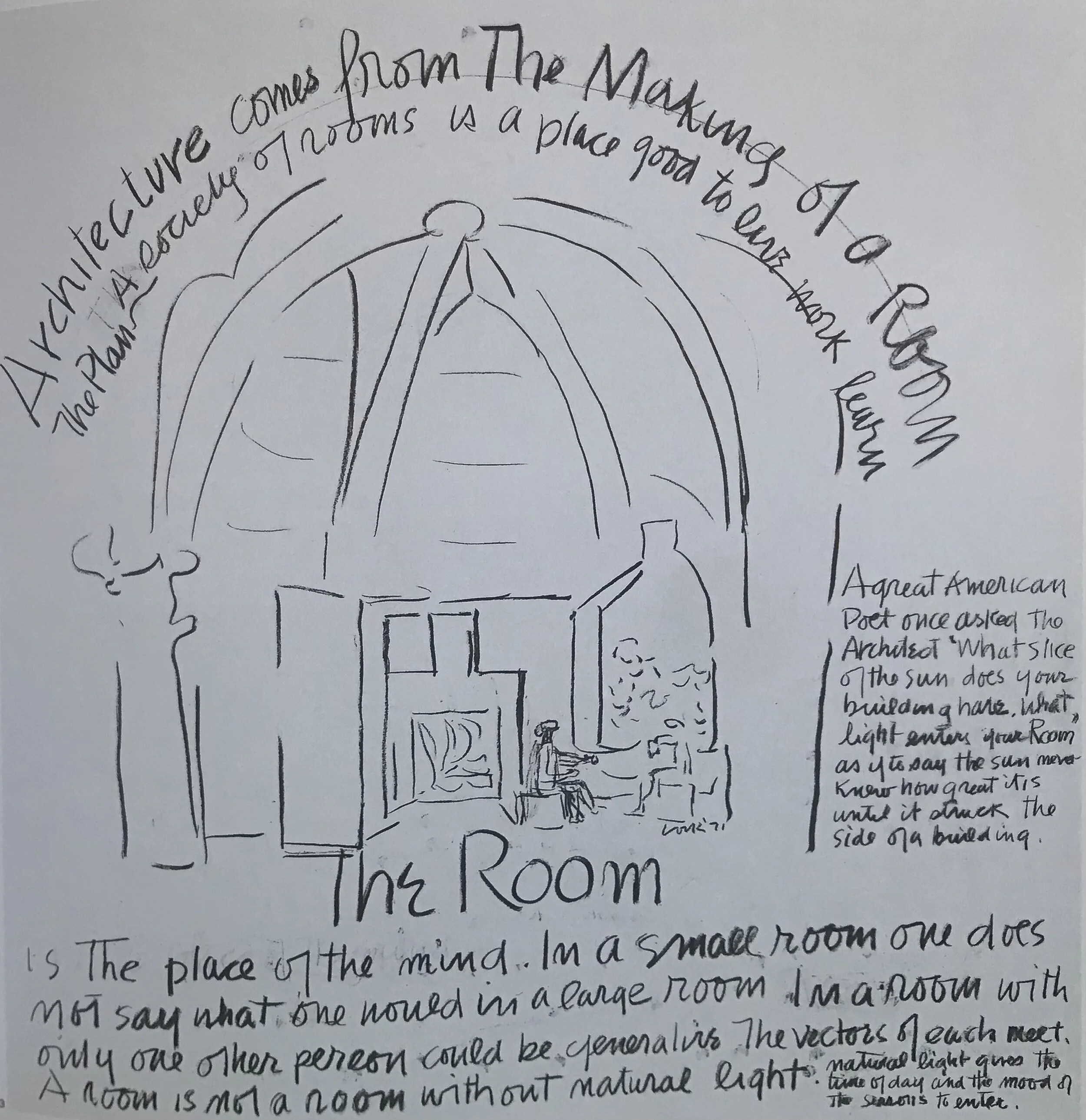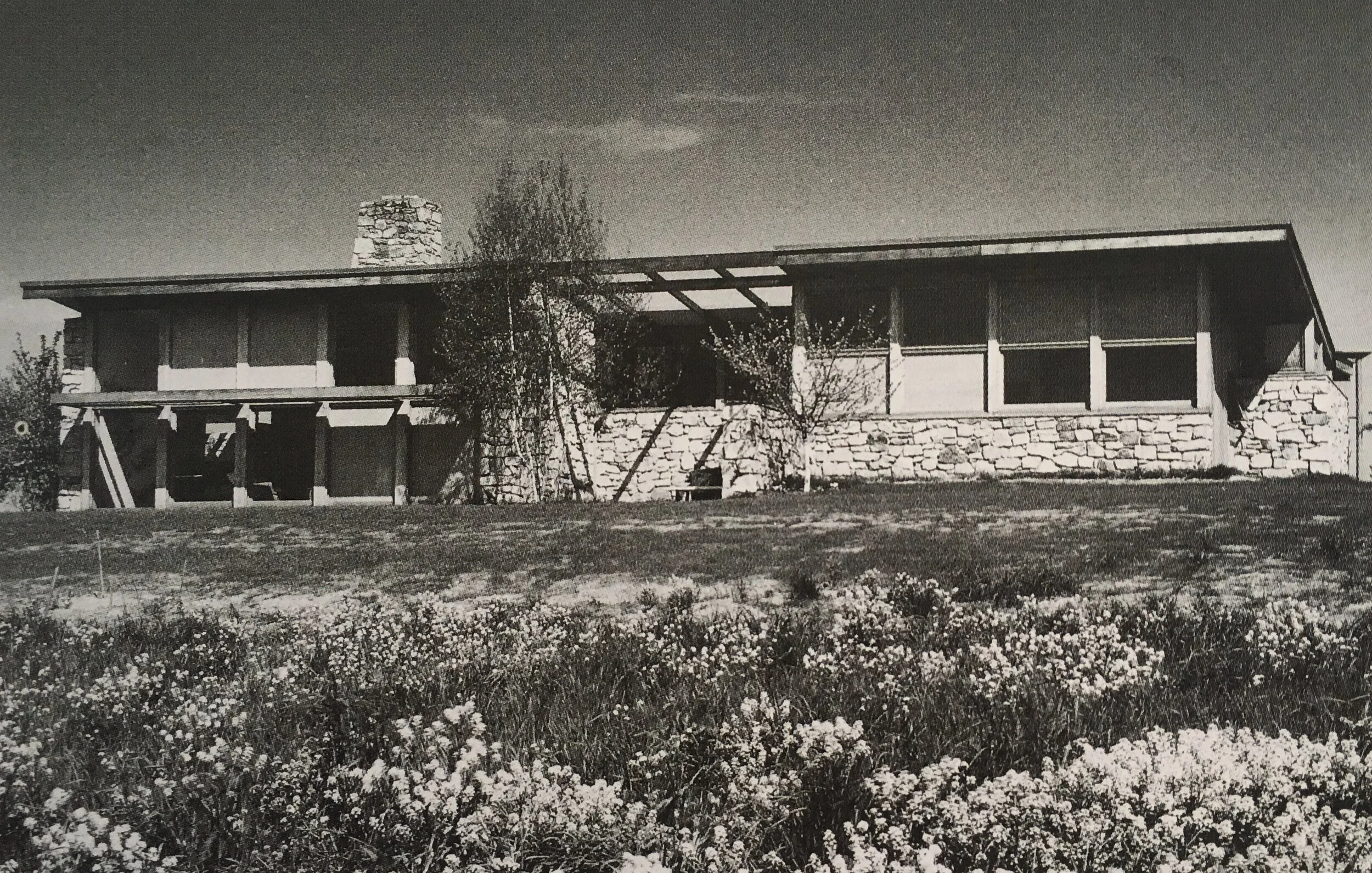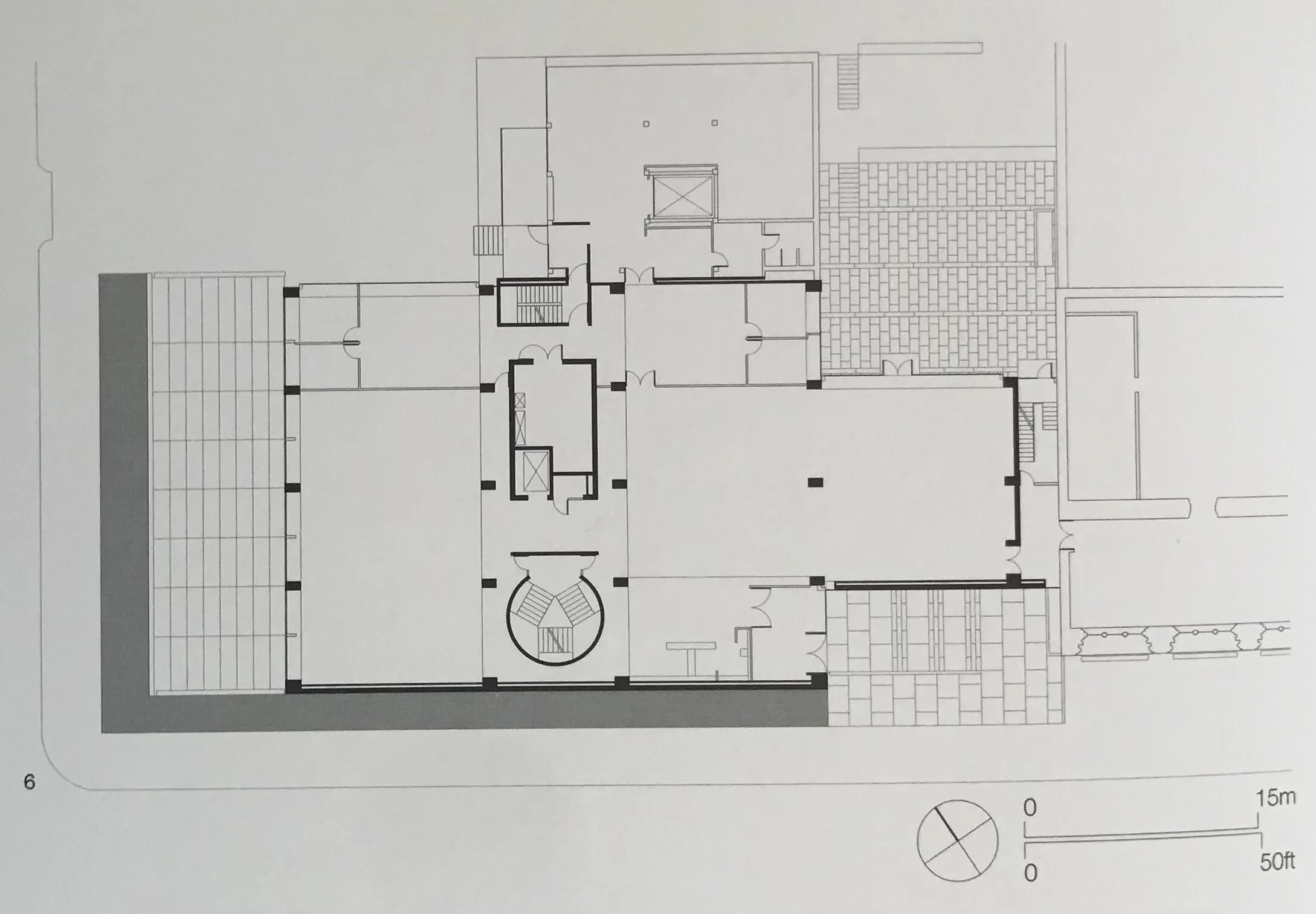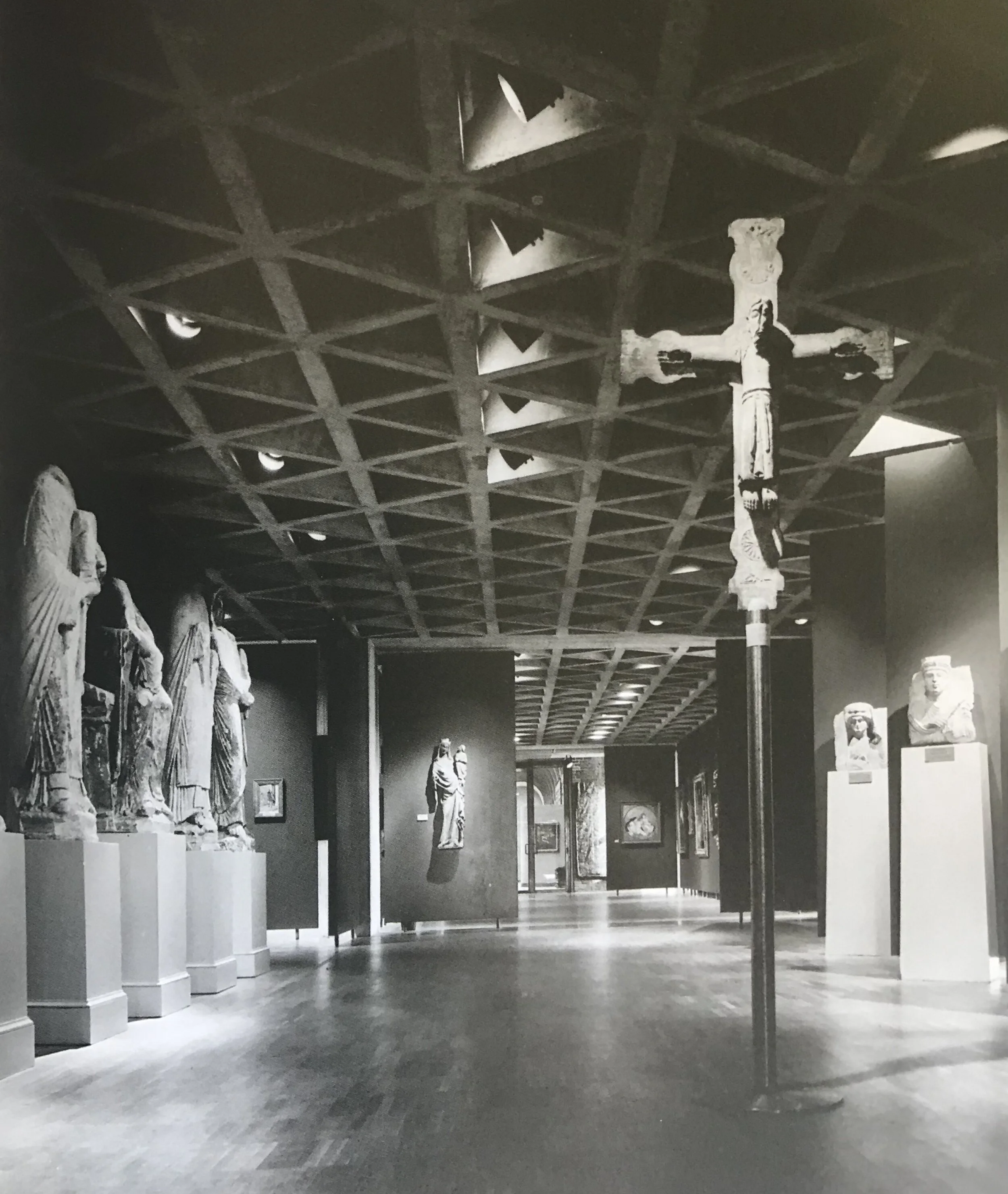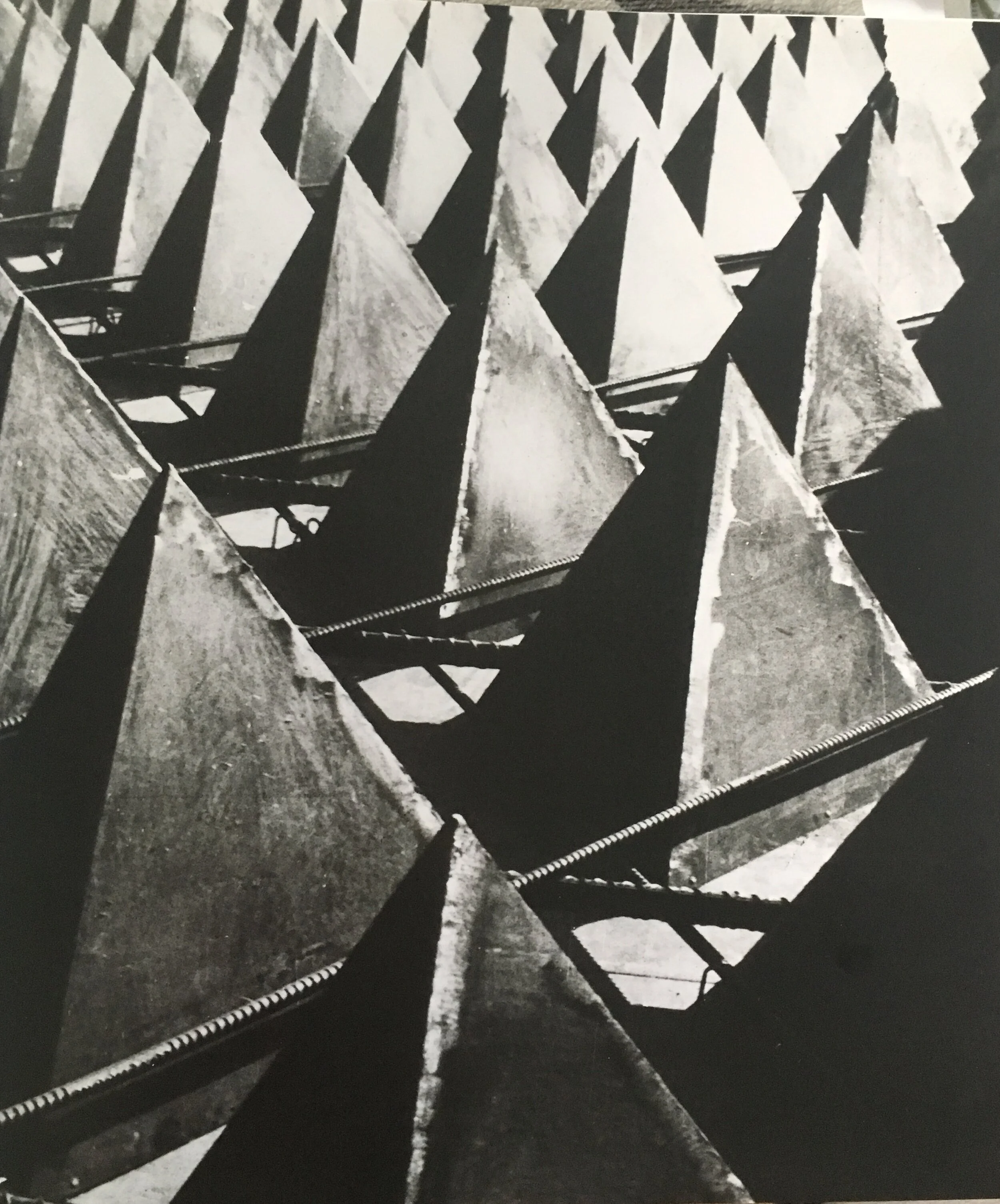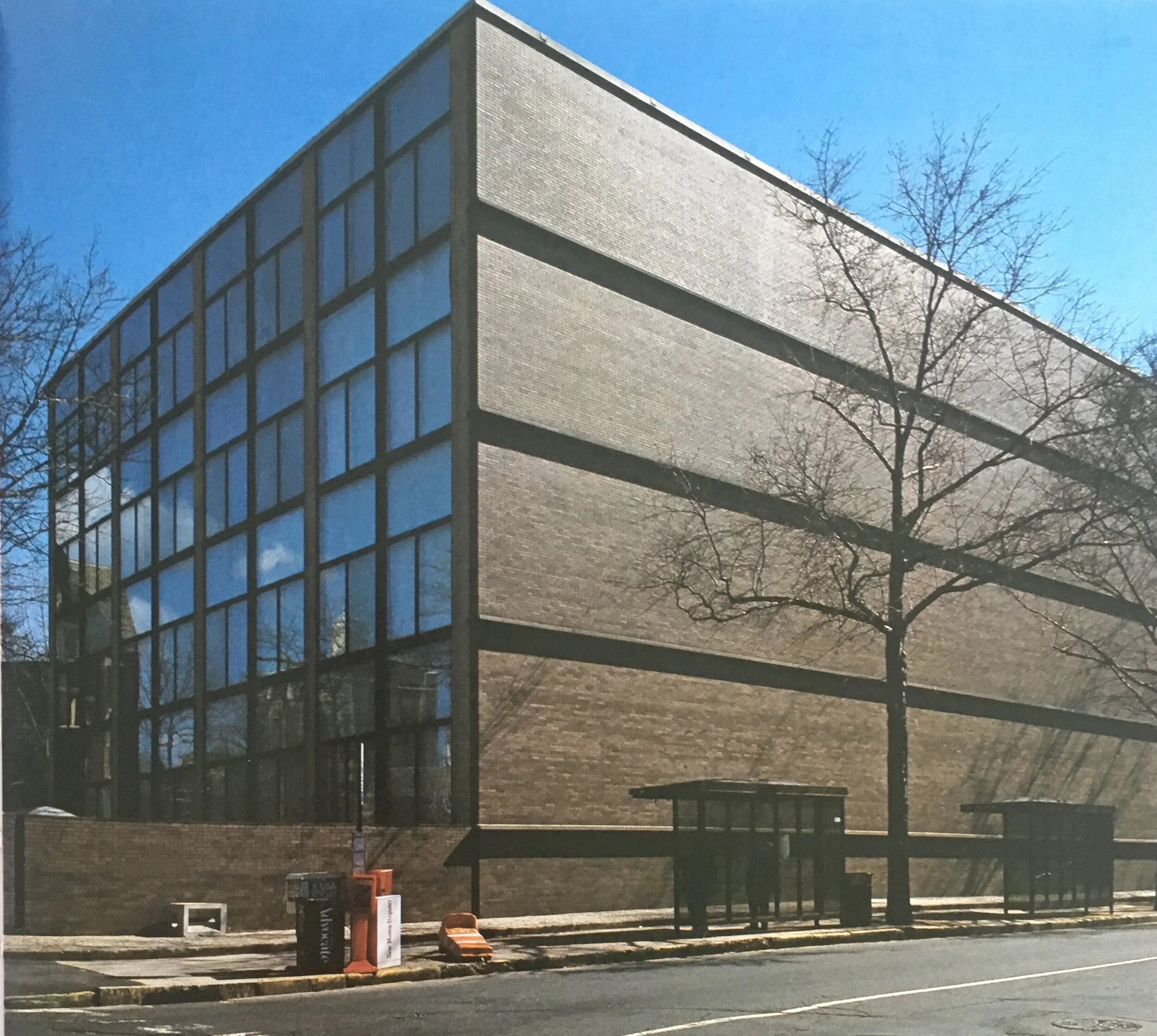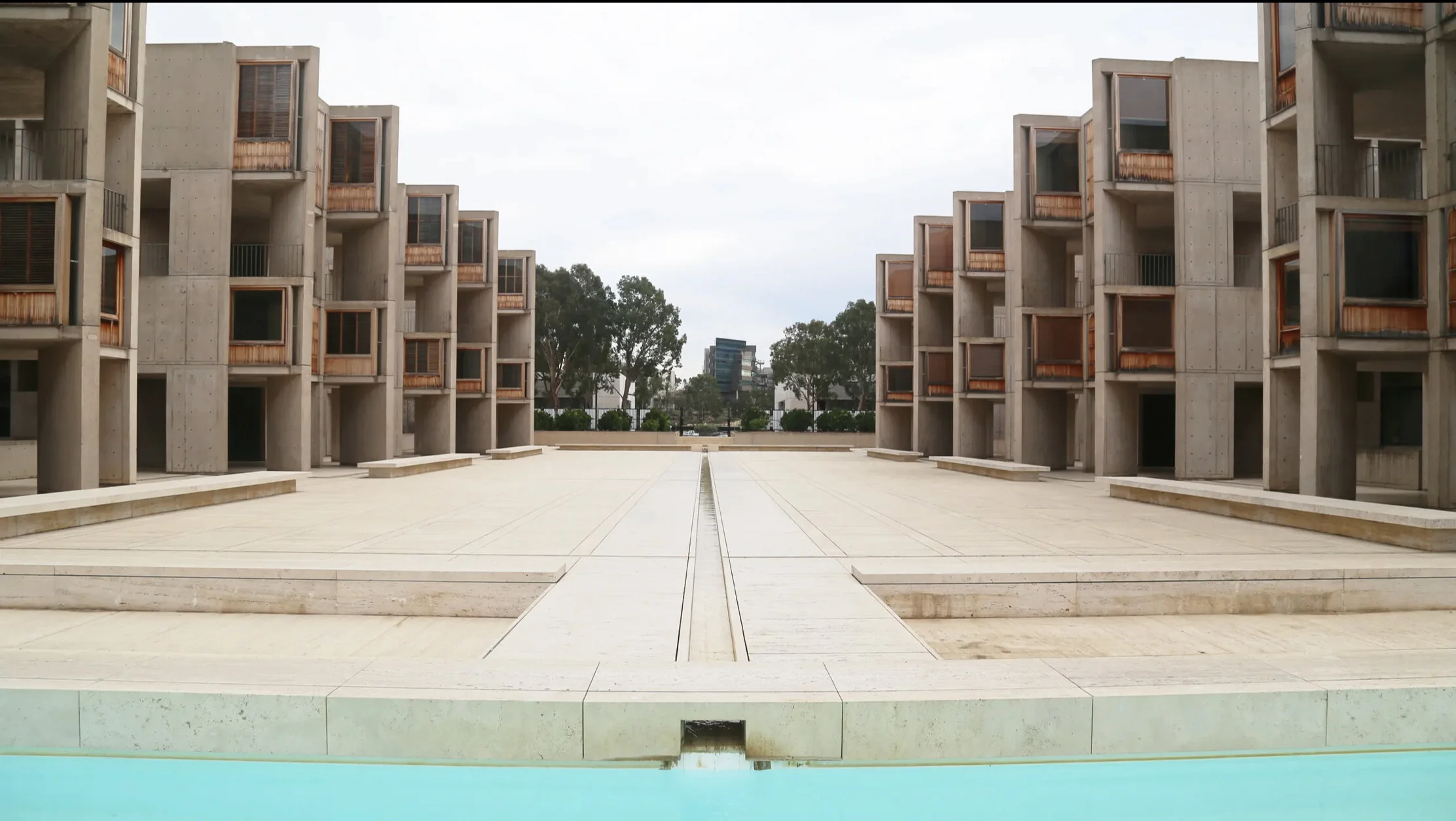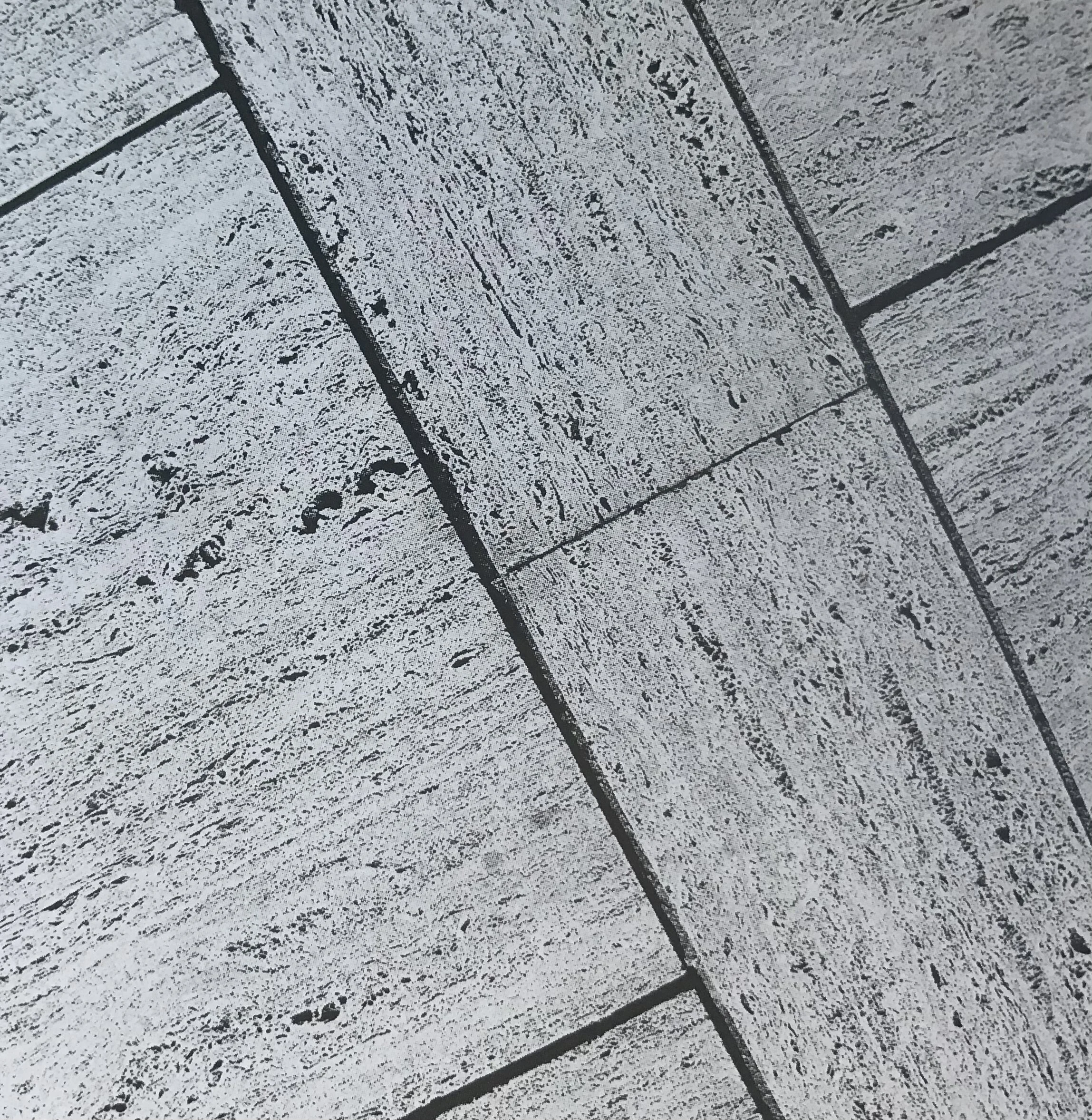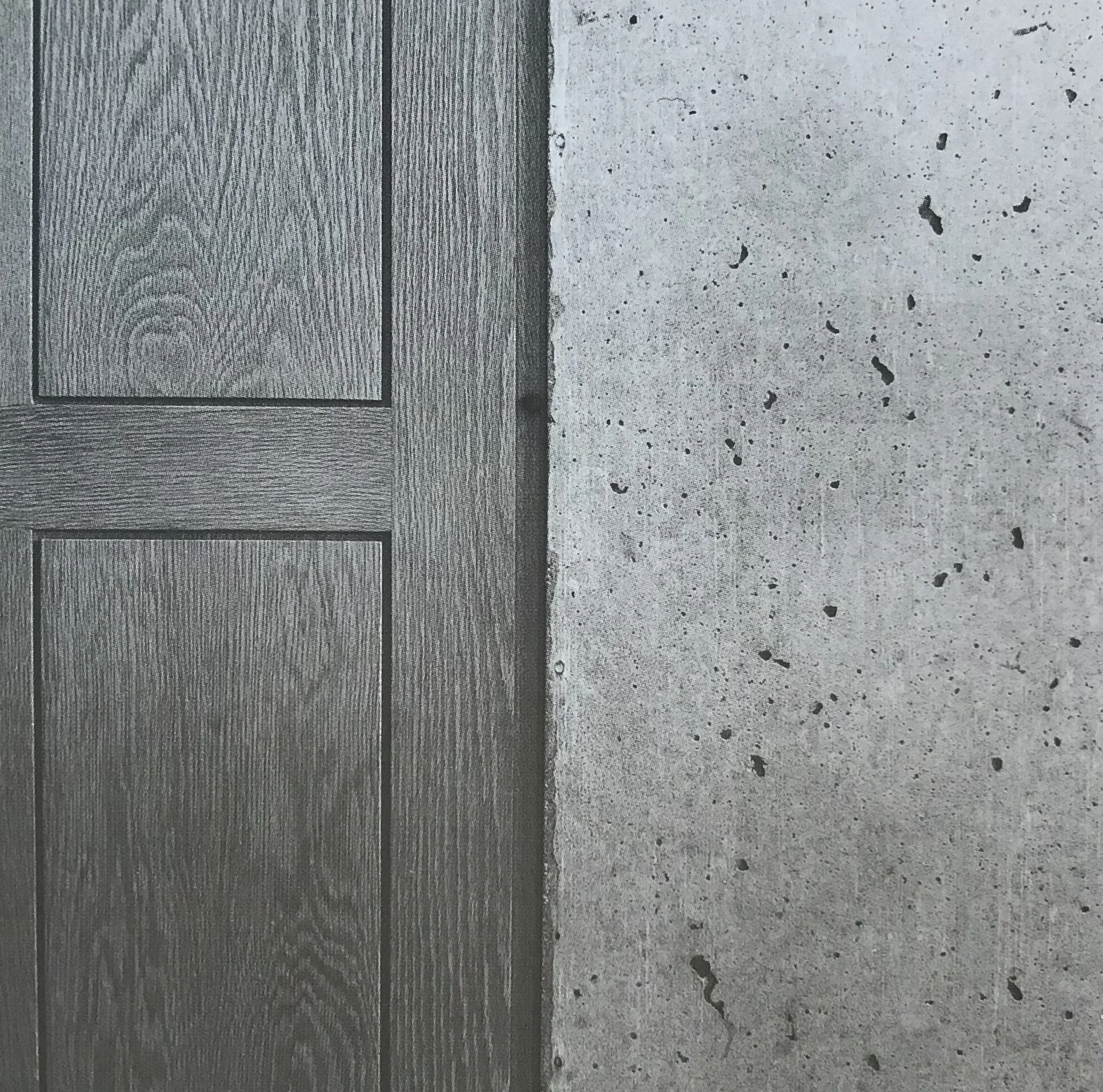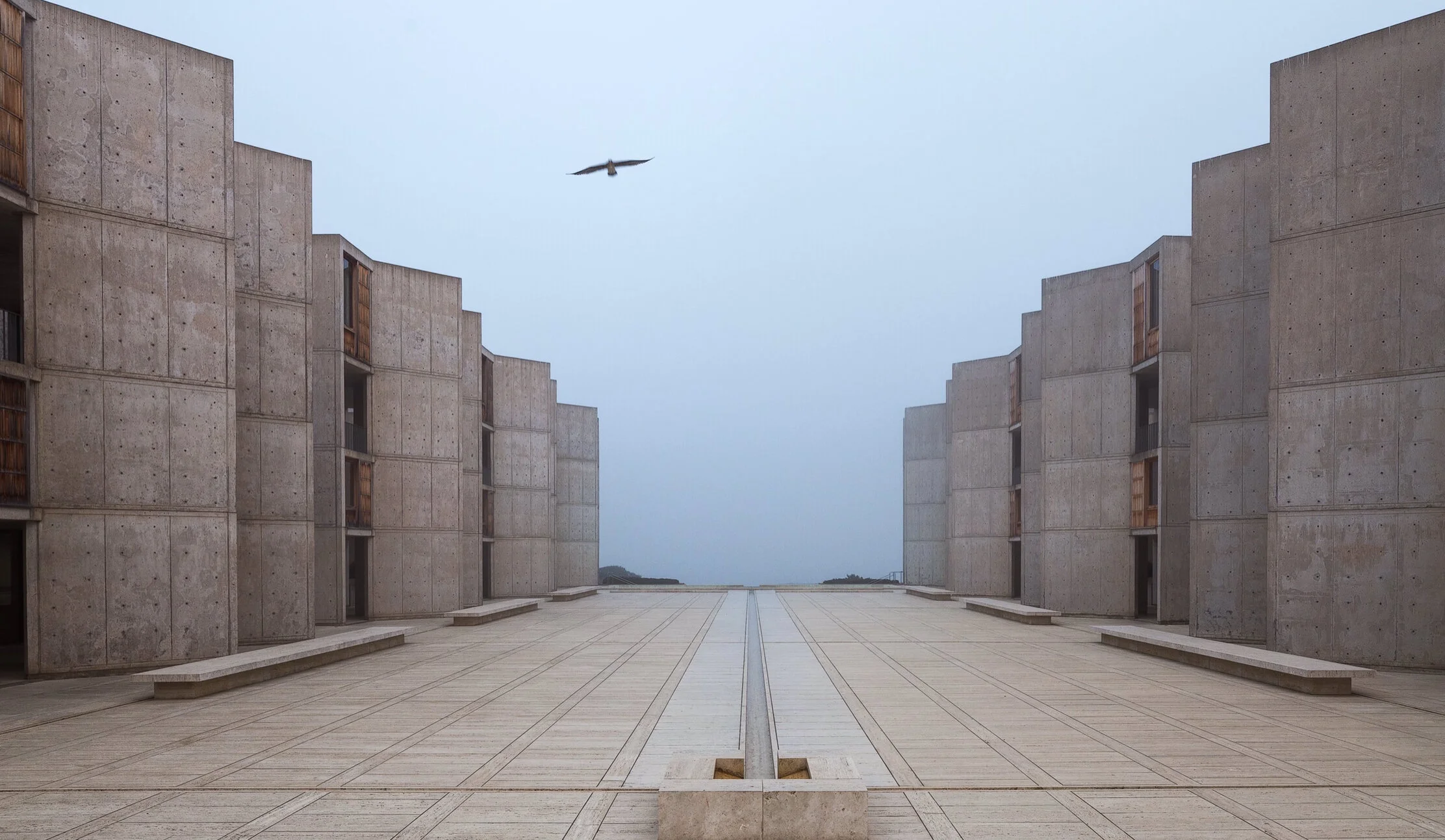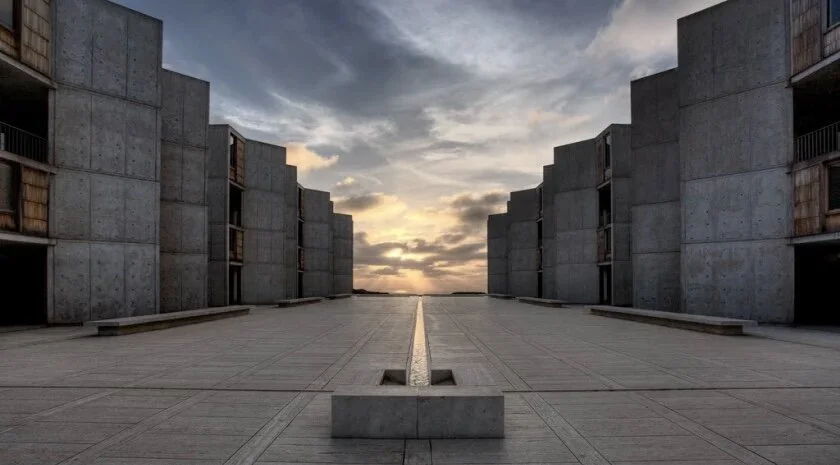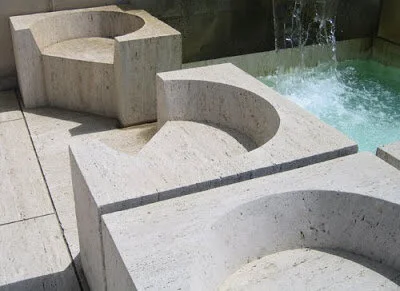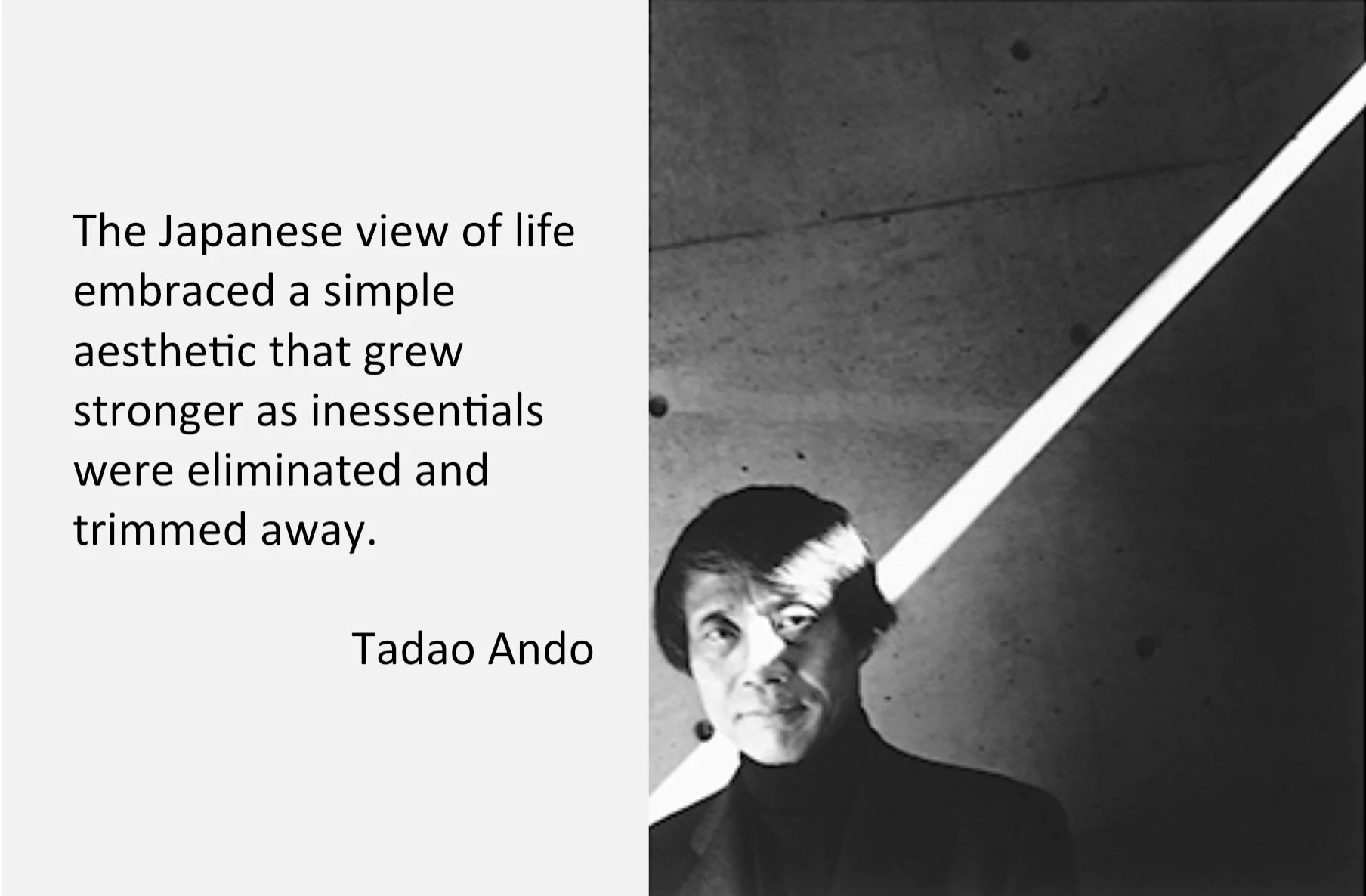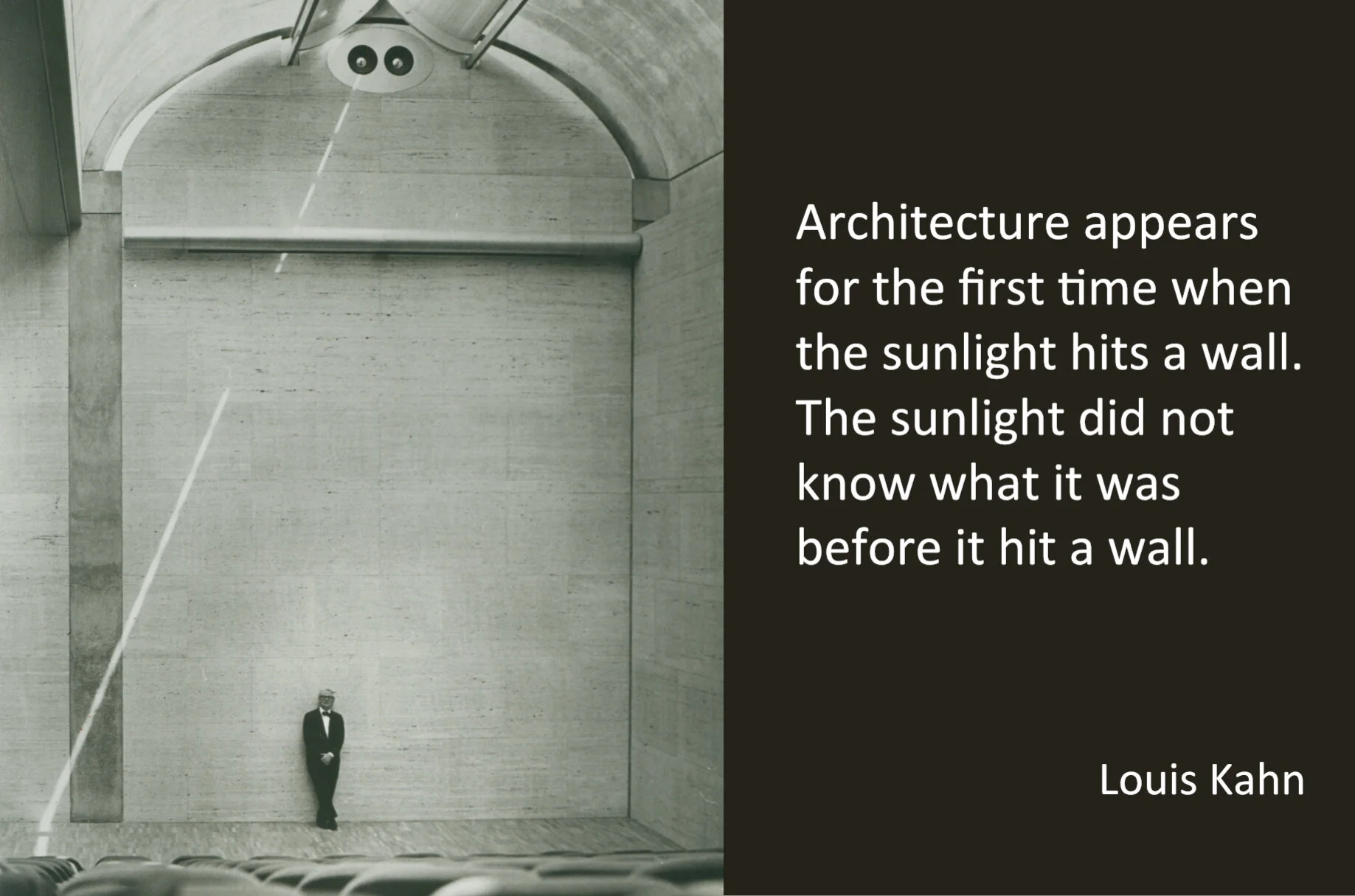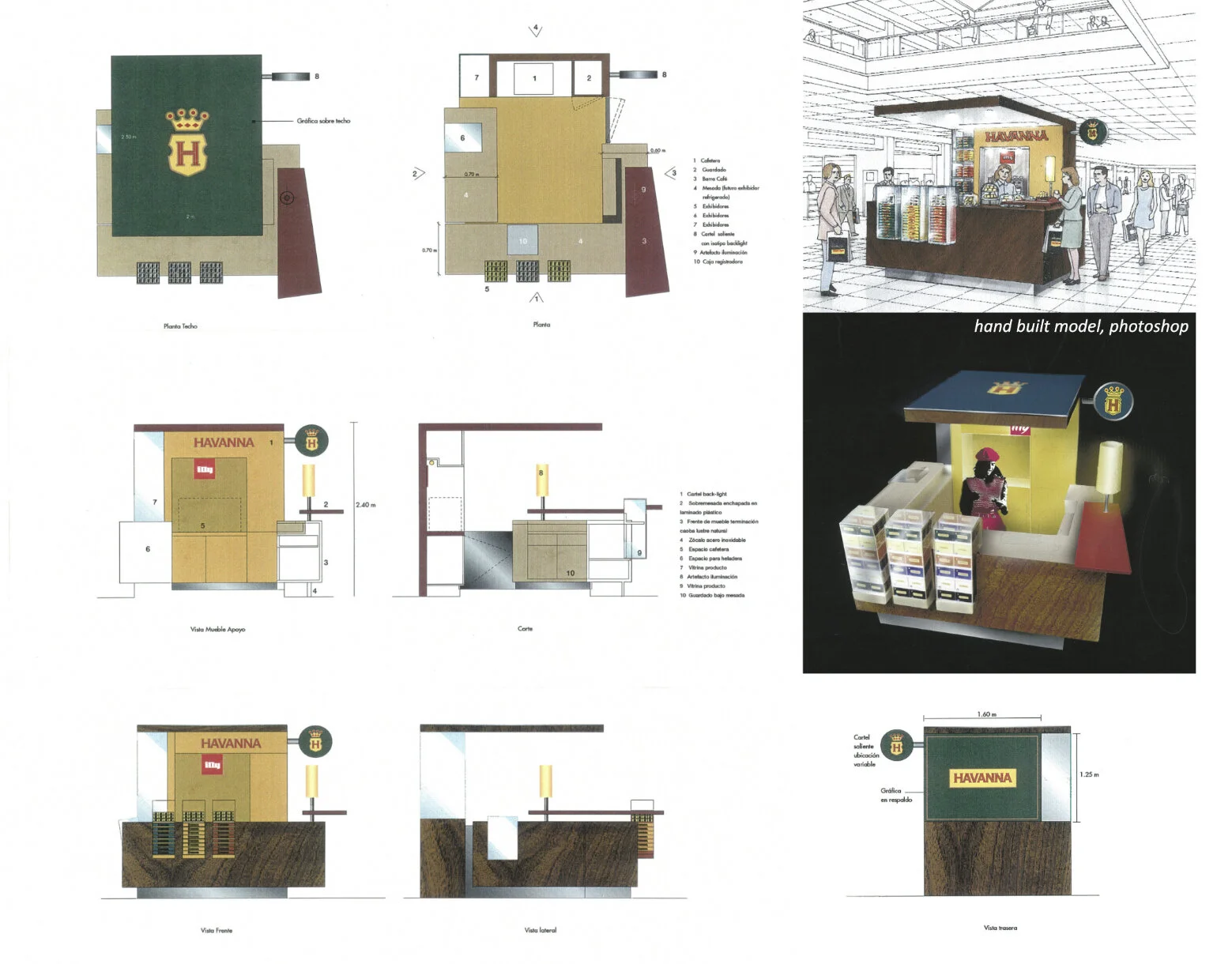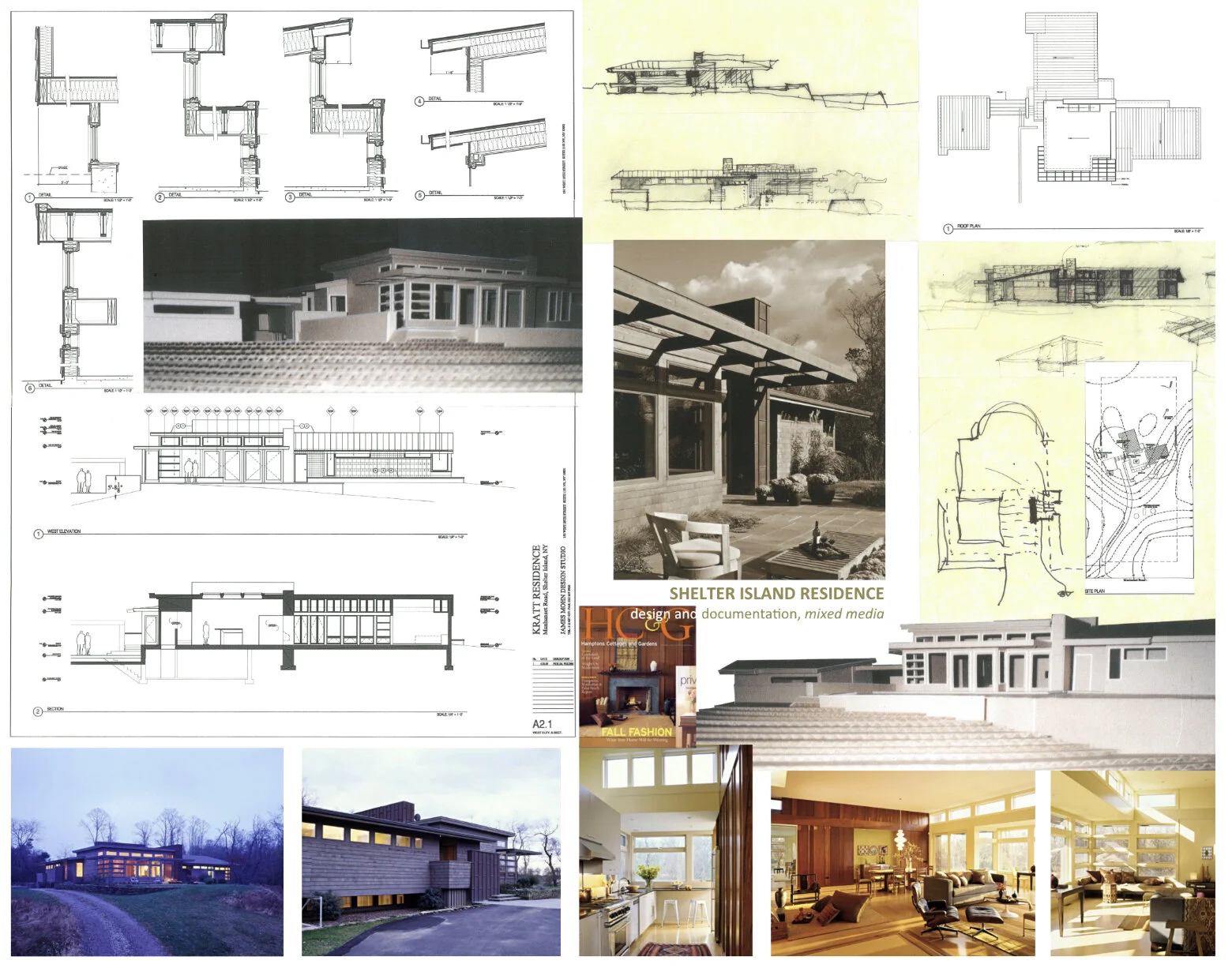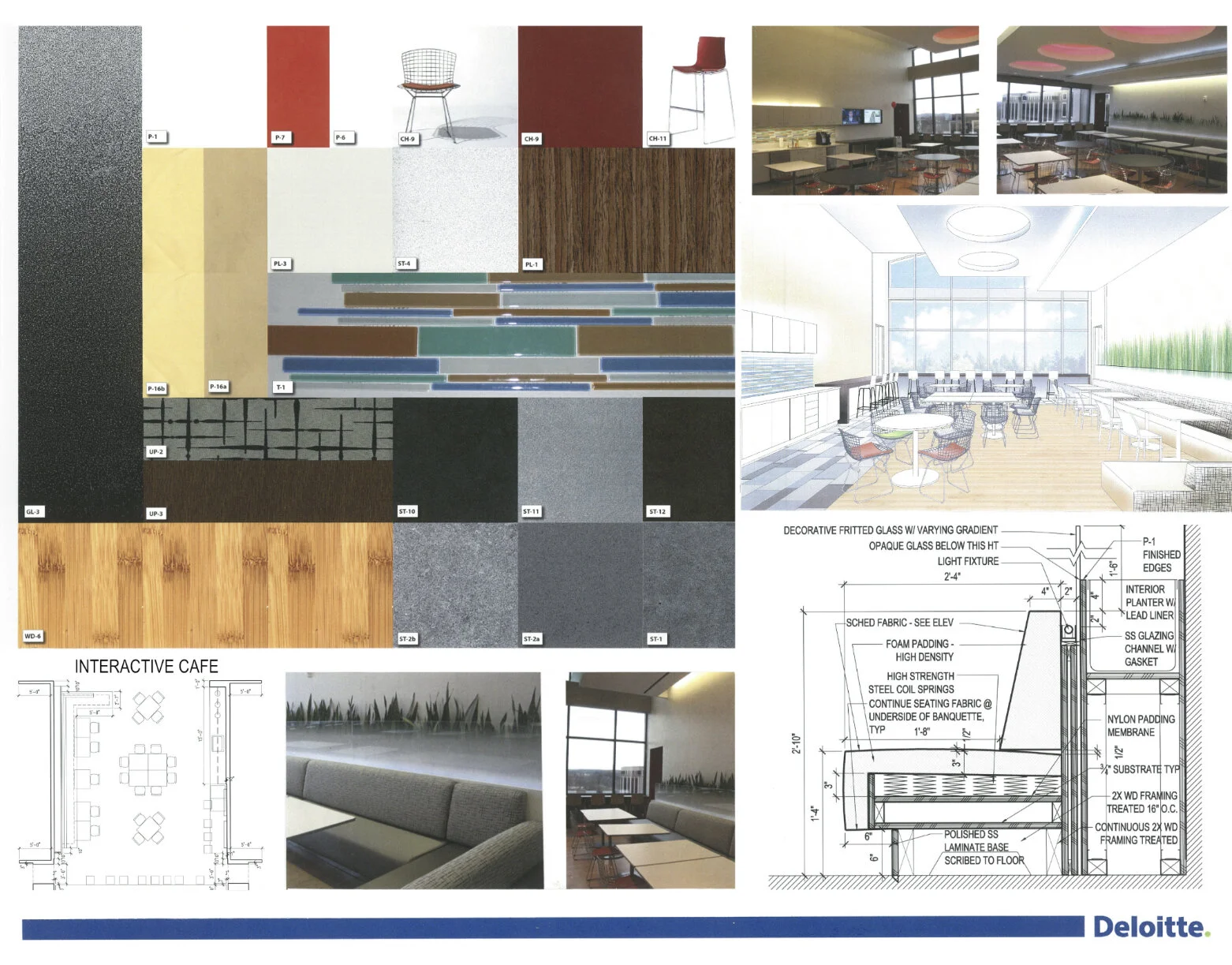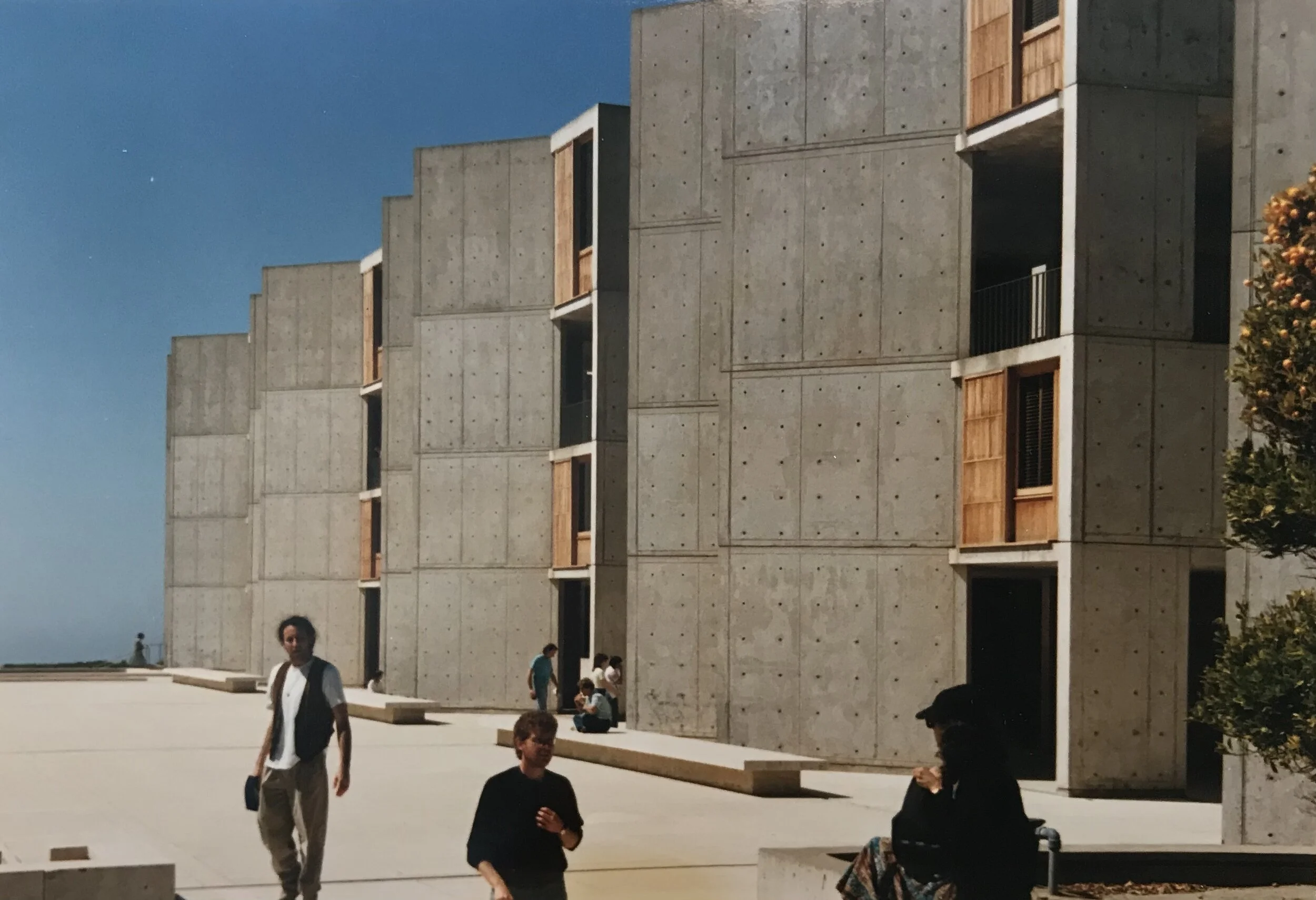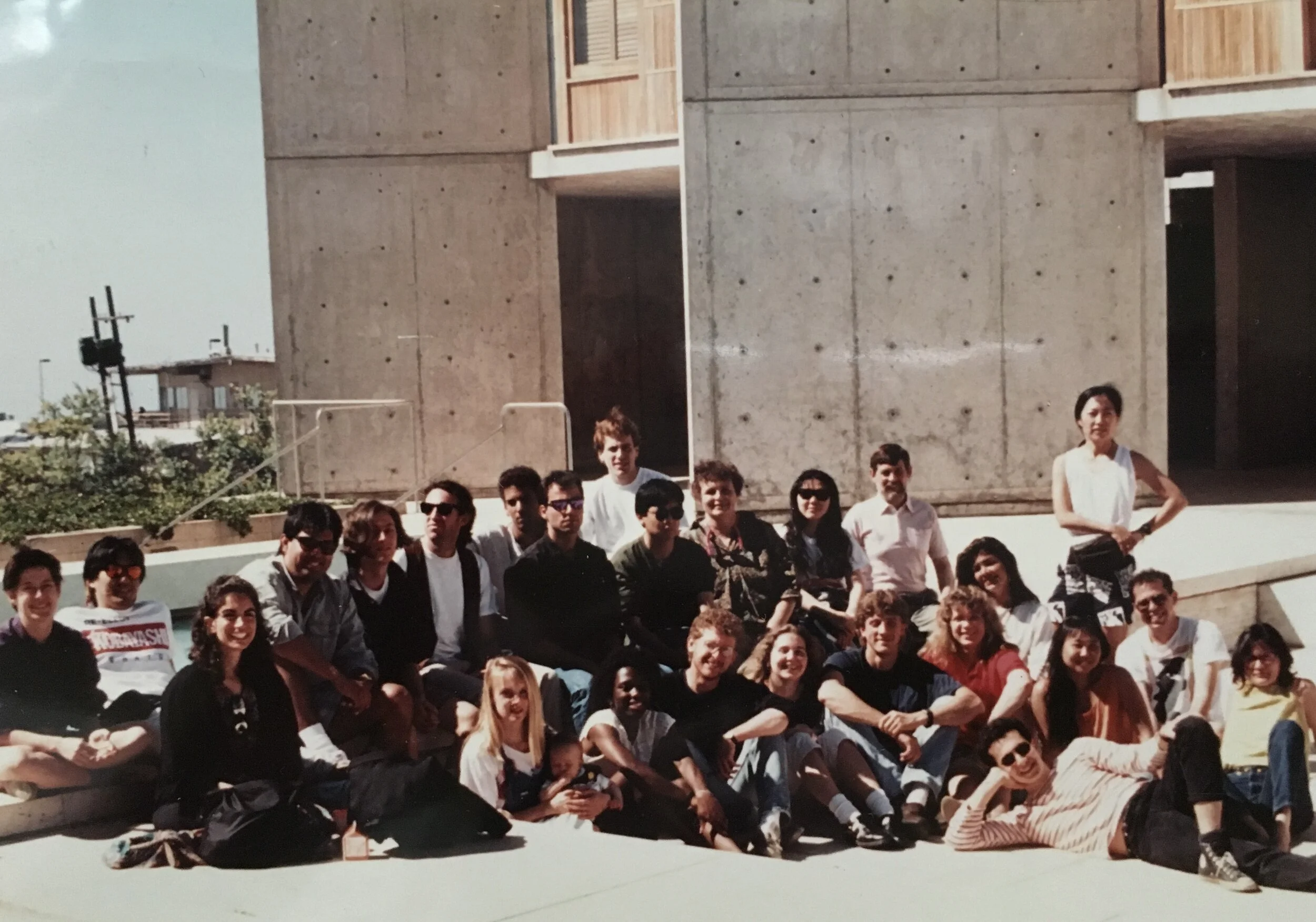Restraint
Light shines truth, not ego
Materiality of Louis Kahn
AMERICAN ARCHITECT
1901-1974
RUSSIAN EMPIRE EMIGRE
厳格
Genkaku
The architecture of Louis Kahn honors and appreciates the ethereal power of nature, revealing light and what it can achieve. At the Salk Institute in La Jolla, California, built in 1965, Louis Kahn created a space that seamlessly integrated architecture, landscape, and the purpose of Jonas Salk’s focus - science.
When I first visited the Salk Institute in California, I was wholly unprepared for the calming, physical impact of a welcomed guest in the space. I stood in awe of its iconic symmetrical travertine plaza, with a singular line of water running down the center and seemingly disappearing into the Pacific Ocean beyond. The plaza seems to capture an enormous slice of the universe allowing the working scientists to contemplate their part in a brilliant whole.
“I sense Light as the giver of all presences, and material as spent Light. What is made by Light casts a shadow, and the shadow belongs to Light”. - Louis Kahn
Louis Kahn brought buildings to life, allowing light to change their shape throughout the day. He disciplined this natural everyday occurrence as a chance for spaces to reimagine themselves and literally dance before our eyes. Becoming a conductor of light, his role was to create the stage on which light is honored and celebrated.
read more
Kahn’s fascination with light and materials is his building principle in ordering spaces and forms. His buildings are all stylistically different, yet he follows a strict environmental language focused on light and materiality (endurance) of his creations.
His environments adopt textural and tonal variations because of its interaction with natural light. These are not accidents. They are the result of careful study of the fleeting, ephemeral natural, universal power that gives rise to our emotions. I personally believe that Kahn literally wanted to possess and be the light that enters. His desire to play with it and his buildings, much like the boy who braved to take hold of it–in the form of a smoldering glowing piece of coal–to his unfortunate detriment and enduring injury.
“Design is not making beauty, beauty emerges from selection, affinities, integration, love.”
Kahn’s use of materials was disciplined, deliberate, and mindful at the Salk Institute. Honoring the site ground with pure travertine, where sky and ground meet at the horizon is a natural and honest connection. The building facade also reflects this duality of the soft organic teak wood set within the hard man-made concrete, left unfinished and raw (foretelling Tadao Ando distinctively adopted style). We experience this delicate union: Impermanence meets permanence. A gravity in the balance of both forces is not only poetic, but visually rich in texture and pattern. He creates a natural quilt integrating diverse materials in his facades.
Discipline of Materiality: Earnest and honest expression of materials. Uncommon, no historical reference, sophisticated, restrained and refined forms. Disciple in simplicity of pure, often geometric shapes. Inclusive built environments as much for entertainment of light as for its inhabitants. The power of light. Respect of the natural occurrences in light and materials.




